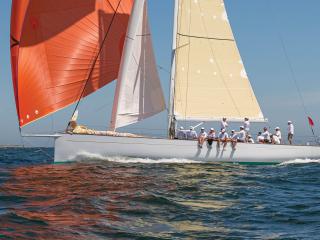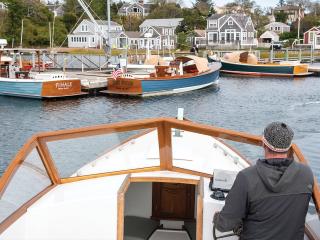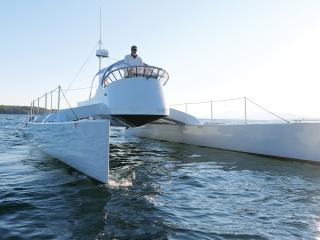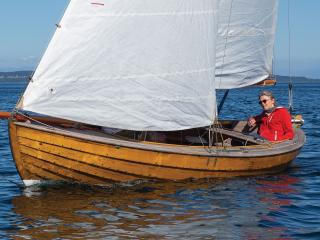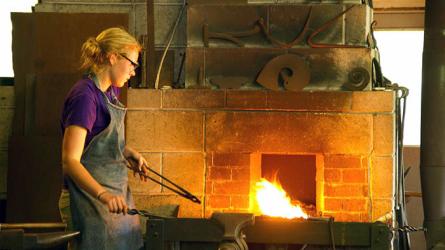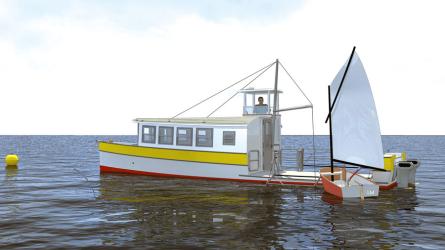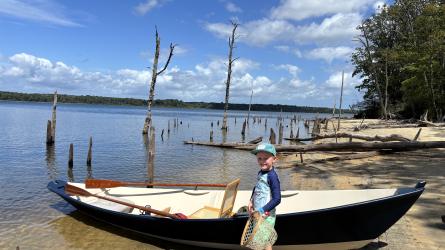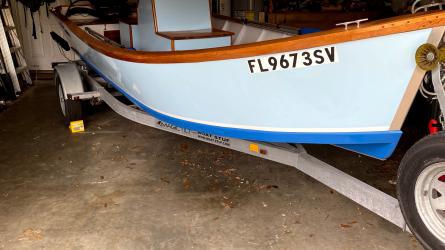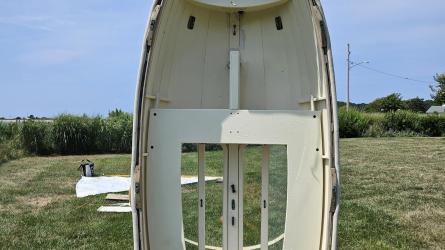March / April 2021
The Cat Men of Quincy
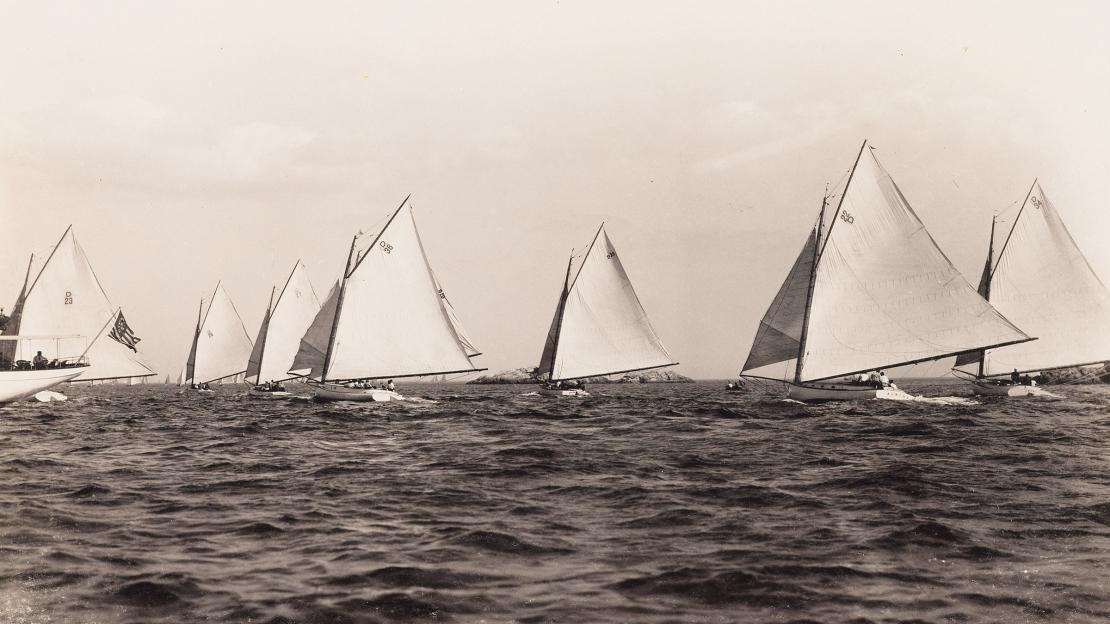
The popularity of the D Class is evident at the start of this race at Marblehead on August 15, 1908. Inset—D-Class champions received a variety of cups, trophies, and medals. This rare example was presented to Wallace W. Arnold, skipper of DOLLY III for his 1910 championship performance.
"Have a seat young man,” the old-timer said. “You’re here about the catboats we sailed years ago?”
“Yes,” I answered. “I never thought I’d be lucky enough to meet a man who knew them, even in Quincy, Massachusetts, which seemed to be the heart of it all.”
“Ah, well,” he nodded. “Those were some days. All gone now.”
Hanging on the walls were big, framed photographs that the old-timer had taken 60 years earlier of Boston’s T Wharf crowded with fishing schooners, of local one-designs, and, of course, catboats. C. Willis Garey still had a sharp memory when we met in 1981 and he was 88. He could well recall boats he had known, and their dimensions and features, with no problem at all. After a while, when I had wearied him with questions and prepared to leave, he said, “Hang on a minute.”
To read the rest of this article:
Click the button below to log into your Digital Issue Access account.
No digital access? Subscribe or upgrade to a WoodenBoat Digital Subscription and finish reading this article as well as every article we have published for the past 50-years.
ACCESS TO EXPERIENCE
2-for-1 Print & Digital Subscription Offer
For this holiday season, WoodenBoat is offering our best buy one, get one deal ever. Subscribe with a print & digital subscription for $42.95, and we’ll give you a FREE GIFT SUBSCRIPTION to share with someone special.
1 YEAR SUBSCRIPTION (6 ISSUES)
PLUS ACCESS TO MORE THAN 300 DIGITAL BACK ISSUES
PRINT+DIGITAL $42.95
Subscribe
To read articles from previous issues, you can purchase the issue at The WoodenBoat Store link below.
 Purchase this issue from
Purchase this issue from
